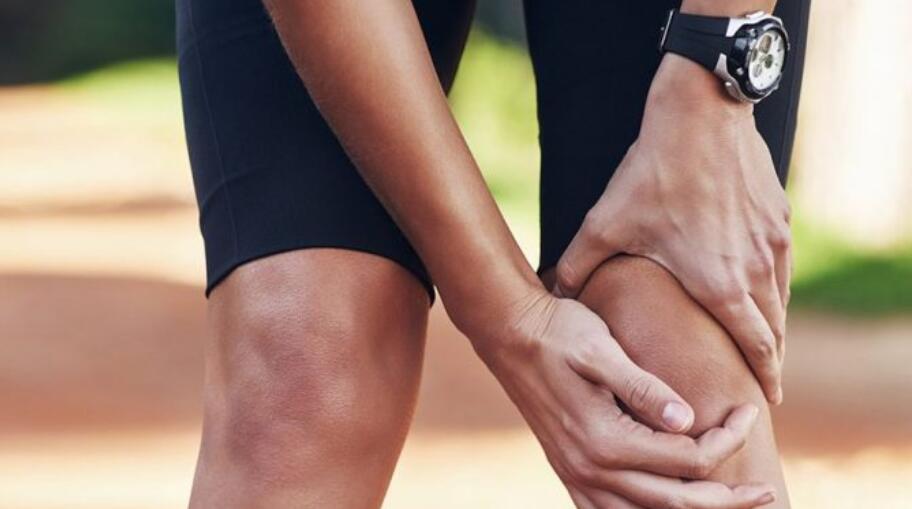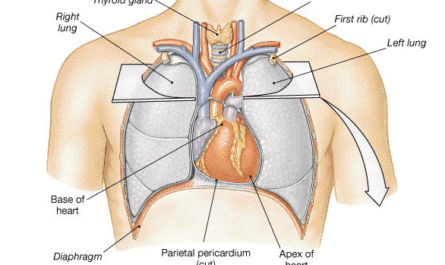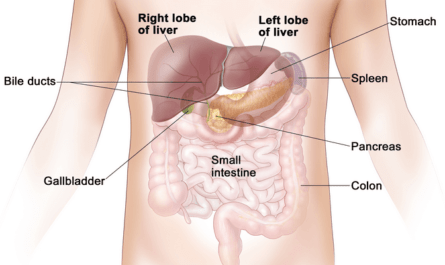Exercise is crucial for maintaining a healthy lifestyle, but sometimes it can lead to unexpected discomfort, such as knee soreness. Whether you’re a seasoned athlete or just starting your fitness journey, understanding knee soreness after exercise is essential. This article will explore this topic from various angles, providing insights, tips, and expert advice to help you stay on track with your fitness goals.
Understanding the Knee Joint
Before we delve into the causes of knee soreness, it’s essential to have a basic understanding of the knee joint itself. The knee is a complex hinge joint that connects the thigh bone (femur) to the shinbone (tibia) and the smaller bone on the outside of the lower leg (fibula). It is surrounded by ligaments, tendons, and muscles, making it susceptible to various types of strain and injuries.

Causes of Knee Soreness After Exercise
1. Overuse or Overtraining
One of the leading causes of knee soreness after exercise is overuse or overtraining. Pushing your body beyond its limits can put excessive strain on your knees, leading to soreness and discomfort. It is important to listen to your body and give yourself adequate rest and recovery time to prevent overuse injuries.
2. Muscle Imbalances
Muscle imbalances can also contribute to knee soreness after exercise. When certain muscles are stronger or tighter than others, it can create an imbalance in the knee joint, putting additional stress on the surrounding structures. Incorporating exercises that target muscle imbalances, such as strengthening the quadriceps and hamstrings, can help alleviate knee soreness.
3. Improper Form
Using improper form during exercise can put unnecessary strain on your knees, leading to soreness. It is crucial to maintain proper alignment and technique to prevent knee injuries. Working with a qualified fitness professional or trainer can help ensure you use the correct form and technique during your workouts.
4. Inadequate Warm-Up or Cool-Down
Skipping warm-up exercises or neglecting to cool down properly after a workout can increase the risk of knee soreness. Warm-up exercises prepare your muscles and joints for the upcoming activity, while cool-down exercises help to gradually bring your heart rate back to normal and prevent stiffness.
Incorporating dynamic stretches and foam rolling into your warm-up and cool-down routine can help reduce knee soreness.
5. Footwear
Wearing improper footwear during exercise can also contribute to knee soreness. Shoes not providing adequate support or cushioning can increase the impact on your knees, leading to discomfort. Investing in a pair of quality athletic shoes that are designed for your specific activity can make a significant difference in preventing knee soreness.
6. Running or Jumping Activities
Activities that involve repetitive impact, such as running or jumping, can put a significant amount of stress on your knees. These high-impact activities can lead to knee soreness, especially if you do not gradually increase your intensity or mileage. Incorporating low-impact exercises, such as swimming or cycling, can help reduce the strain on your knees while still providing an effective workout.
7. Excess Body Weight
Carrying excess body weight can place additional stress on your knees, leading to soreness and discomfort. Maintaining a healthy weight through a balanced diet and regular exercise can help alleviate knee soreness and improve overall joint health.
8. Previous Injuries or Conditions
If you have had previous knee injuries or conditions, such as arthritis or tendonitis, you may be more susceptible to knee soreness after exercise. Working with a healthcare professional to manage any existing conditions and develop a workout plan that accommodates your specific needs is important.
9. Inadequate Recovery
Insufficient recovery time between workouts can contribute to knee soreness. Giving your body enough time to rest and recover prevents overuse injuries. Incorporating rest days into your workout routine and listening to your body’s signals for fatigue or discomfort can help reduce knee soreness.
10. Inadequate Hydration and Nutrition
Proper hydration and nutrition are essential for maintaining overall joint health. Dehydration can contribute to joint stiffness and discomfort, while a lack of essential nutrients can hinder the body’s ability to repair and recover. Staying hydrated and consuming a balanced diet rich in vitamins and minerals can help prevent knee soreness after exercise.
11. Inflammation and Tendonitis
Inflammation and tendonitis can also cause knee soreness after exercise. These conditions occur when the tendons around the knee become inflamed or irritated, often due to repetitive movements or overuse. Rest, ice, compression, and elevation (RICE) therapy can help reduce inflammation and alleviate knee soreness.
12. Improper Foot Mechanics
Issues with foot mechanics, such as overpronation or supination, can affect the alignment and stability of your knees. If your feet are not properly supported during exercise, it can lead to increased stress on the knees. Using orthotic inserts or seeking professional guidance from a podiatrist can help correct foot mechanics and reduce knee soreness.
Natural Remedies for Knee Soreness After Exercise
Knee soreness can be a common issue for fitness enthusiasts. Let’s delve into some natural remedies to relieve this discomfort:
1. RICE Method
The RICE method, which stands for Rest, Ice, Compression, and Elevation, is a well-known approach to soothe knee soreness. Rest your knee, apply ice, use compression bandages, and elevate your leg to reduce swelling and discomfort.
2. Warm-Up and Cool Down
Proper warm-up and cool-down exercises are essential before and after your workout. These routines help prevent knee soreness by preparing your muscles and joints for physical activity and aiding in recovery afterward.
3. Stretching
Incorporating regular stretching exercises into your fitness routine can significantly reduce knee soreness. Focus on stretches that target the quadriceps, hamstrings, and calf muscles to maintain flexibility.
4. Use Proper Footwear
Investing in appropriate footwear with proper arch support and cushioning can alleviate knee soreness during exercise. Ill-fitting shoes can strain your knees and exacerbate soreness.
5. Natural Supplements
Certain supplements like glucosamine and chondroitin sulfate have shown promise in promoting joint health. Consult with a healthcare professional before adding supplements to your routine.
Prevention Techniques for Knee Soreness
Here are some prevention techniques to incorporate into your fitness routine:
- Gradually increase the intensity and duration of your workouts to allow your body to adapt and avoid overuse injuries.
- Incorporate cross-training activities to reduce the repetitive impact on your knees. Alternating between different types of exercises can help prevent muscle imbalances and reduce knee soreness.
- Use proper form and technique during exercises to minimize strain on your knees. If you are unsure about the correct form, consider working with a qualified fitness professional or trainer.
- Prioritize a thorough warm-up and cool-down routine before and after each workout. Dynamic stretches, foam rolling, and mobility exercises can help prepare your muscles and joints for exercise and prevent knee soreness.
- Invest in high-quality athletic shoes that provide adequate support and cushioning for your specific activity. Replace your shoes regularly to ensure optimal performance and protection for your knees.
Stretching Exercises for Increased Flexibility and Reduced Knee Soreness
Incorporating stretching exercises into your fitness routine can help increase flexibility, improve joint mobility, and reduce knee soreness. Here are some stretches that target the muscles around the knee:
- Quadriceps Stretch: Stand upright and hold onto a wall or sturdy object for balance. Bend one leg at the knee and bring your foot towards your glutes. Grab your foot with your hand and gently pull it closer to your body until you feel a stretch in the front of your thigh. Hold for 30 seconds, and then switch sides.
- Hamstring Stretch: Sit on the edge of a chair with one leg extended in front of you and the other foot flat on the floor. Lean forward from your hips, keeping your back straight, and reach towards your toes. Hold the stretch for 30 seconds, and then switch legs.
- Calf Stretch: Stand facing a wall and place your hands against it for support. Step one foot back, keeping it straight, and press your heel into the ground. You should feel a stretch in your calf muscle. Hold for 30 seconds, and then switch sides.
Remember to perform these stretches after your workout when your muscles are warm. Avoid bouncing or jerking movements during stretching, as they can lead to injury. Gradually increase the intensity of the stretch and listen to your body’s limits.
When to Seek Medical Help for Persistent Knee Soreness
While most cases of knee soreness after exercise can be alleviated with rest and self-care, it is important to recognize when it is necessary to seek medical help. If you experience persistent knee soreness that does not improve with rest, or if you notice any of the following symptoms, consult a healthcare professional:
- Severe pain that prevents you from bearing weight on the affected knee.
- Swelling, redness, or warmth around the knee joint.
- Instability or a feeling that the knee is giving way.
- Locking or catching sensation in the knee.
- Inability to fully extend or flex the knee.
These symptoms may indicate a more serious underlying condition or injury that requires medical attention. A healthcare professional can provide a proper diagnosis and recommend appropriate treatment options.
Frequently Asked Questions
Are there any dietary recommendations to reduce knee soreness?
Yes, maintaining a healthy diet rich in anti-inflammatory foods, such as fruits, vegetables, and omega-3 fatty acids, can help reduce knee soreness.
Can knee braces help with soreness?
Knee braces can provide support and stability, reducing soreness during exercise. However, consult with a healthcare provider to determine if a brace is suitable for your condition.
How long should I rest if I experience knee soreness?
The duration of rest depends on the severity of soreness. In general, resting for a few days and avoiding strenuous activities can aid in recovery.
Is it advisable to use pain-relieving creams?
Topical creams with anti-inflammatory ingredients can offer temporary relief. However, they should not be used as a long-term solution.
Conclusion
knee soreness after exercise is a common issue that can be addressed with the right strategies and techniques. By understanding the causes of knee soreness and implementing prevention techniques, such as proper form, adequate warm-up and cool-down routines, and stretching exercises, you can reduce the risk of knee pain and enjoy a pain-free workout experience.
Remember to listen to your body, give yourself adequate rest and recovery time, and seek medical help if necessary. Say goodbye to knee soreness and embrace a pain-free fitness journey!






